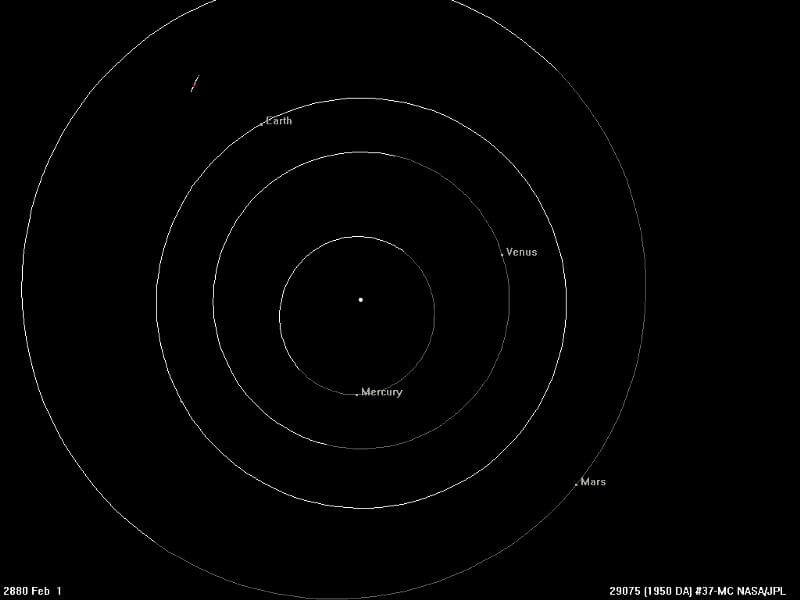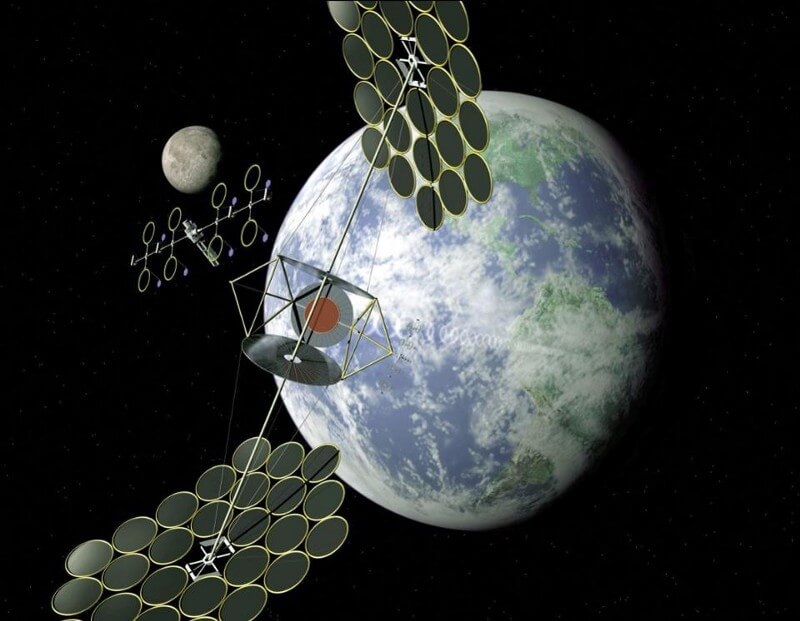
One day in the future the Earth’s oceans will boil, killing all life on the planet’s surface, and make it absolutely uninhabitable. This global warming is in a sense inevitable: the gradual warming experienced by the Sun is due to the gradual burnout of the fuel inside the star. However, there is a way to keep the Earth habitable, if we develop a long-term solution: migration of the whole Earth. Is it possible?
We need to figure out how hot it will be and how quickly it will occur, to move the Earth in pace.
The way in which every star receives its energy lies in the fusion of lighter elements into heavier in the kernel. Our Sun, in particular, for the synthesis of helium from hydrogen in regions where the temperature of the core exceeds 4 000 000 degrees. The hotter, the faster the speed of synthesis; in the heart of the core temperature reaches 15,000,000 degrees. This speed is almost always constant. For a long time the ratio of hydrogen to helium changes, and the interior heats up a little stronger for billions of years. And when is heated, we observe the following:
- luminosity increases — more energy is radiated over time
- shone slightly increases in size, the radius increases by a few percent every billion years
- its temperature remains almost always constant, varying by less than 1% for a billion years.

It all boils down to one uncomfortable fact: the amount of energy that reaches the Earth, slowly growing over time. For every 110 million years, the solar luminosity increases by about 1%. This means that the energy reaching the Earth is also increased by 1% around the same time. When the Earth was four billion years younger than our planet get 70% of the energy received today. And after another two billion years if we do nothing, on the Ground formed a significant problems. At some point the surface temperature rises to 100 degrees Celsius. That is, the oceans will evaporate.
How do we mitigate? There are several possible solutions:
- We can install a series of large reflectors at the Lagrangian point L1, to prevent part of the light to reach Earth.
- We can change by means of geoengineering the atmosphere/albedo of the planet to reflect more light and absorb less.
- We can save the planet from the greenhouse effect, by removing molecules of methane and of carbon dioxide from the atmosphere.
- We can leave Earth and focus on the external terraforming worlds like Mars.
In theory it might work, but will require a huge effort and support.

However, the decision to migrate to a remote Earth orbit will be the final one. And although we will always have to divert the planet from orbit, to keep the temperature constant, it will take hundreds of millions of years. To compensate for the effect of 1% increase of solar luminosity, we need to get the Land of 0.5% of the distance from the Sun; to compensate for the increase in 20% (that is 2 billion years), it is necessary to take Land by 9.5% on. The earth will not be in 149 600 000 km from the Sun, and 164 000 000 km.

Distance from Earth to the Sun has not changed much over the last 4.5 billion years. But if the Sun will heat up and we don’t want the Earth gets roasted finally, we will have to seriously consider the possibility of migration of the planet.
It takes a lot of energy! To move the Ground — all of its six septillion kilograms (6 x 1024) — away from the Sun you will significantly change our orbital parameters. If we take the planet from the Sun 164 000 000 km, are less obvious differences:
- The earth will make one revolution around the Sun is 14.6% longer
- to maintain a stable orbit, our orbital speed should fall with a 30 km/s to 28.5 km/s
- if the period of rotation of Earth remains the same (24 hours), a year is not 365, and 418 days
- The sun will be much smaller in the sky — 10% — and the tides caused by the Sun will be weaker than a few inches

If the Sun will swell in size, and the Earth will move away from him, these two effects not quite kompensiruet; the Sun will appear smaller from the Ground
But in order to bring the Earth so far, we need to produce very large energy changes: we will need to change the gravitational potential energy of the system Sun — Earth. Even taking into account all other factors, including the slow movement of the Earth around the Sun, we have to change the orbital energy of the Earth is 4.7 x 1035 joules, which is equivalent to 1.3 x 1020 terawatt-hours: 1015 times larger than the annual energy cost borne by humanity. You would think that after two billion years, they will be different, it is, but not much. We need 500 000 times more energy than mankind generates in the world today, and all that will be on the movement of the Earth in a safe place.

The speed with which the planets revolve around the Sun depends on their distance to the Sun. Slow migration of the Earth is 9.5% of the distance will not disrupt the orbits of other planets.
Technology is not the difficult question. A complex issue is much more fundamental: how do we get all this energy? In reality, there is only one place that will satisfy our needs: it is the Sun itself. Currently the Earth receives about 1,500 watts of energy per square meter from the Sun. To obtain sufficient capacity for migration of the Earth for a desired period of time, we have to build the array (in space), which will collect 4.7 x 1035 joules of energy, evenly, over 2 billion years. This means that we need an array with an area of 5 x 1015 square metres (and 100% efficiency), equivalent to the entire area of the ten planets like ours.

The concept of space solar power has been under development for a long time, but no one yet imagined the array of solar cells size of 5 billion square kilometers.
Therefore, to move the Earth to a safe orbit away, you will need solar panel 5 billion square kilometers of 100% efficiency, all the energy which will be spent on pushing the Earth into another orbit for 2 billion years. Is this possible physically? Absolutely. With modern technology? Not at all. Is this possible in practice? With what we know now, almost certainly not. To drag an entire planet is difficult for two reasons: first, because of the strength of the gravitational attraction of the Sun and because of the massiveness of the Earth. But we have the Sun and Earth, and the Sun will heat up regardless of our deeds. Until we figure out how to collect and use such energy, we will need other strategies.
Can we save the Earth by moving it away from the Sun?
Ilya Hel